http://blogs.indiewire.com/theplaylist/ ... m=facebook
Still no definite word about casting yet, although the link mentions rumors of several big names, including a few that have worked with Tarantino on other projects (like Samuel L. Jackson).
Of note with this project is that it'll have the widest 70 mm release for any film in the last two decades. Interesting stuff.
This is definitely one that a lot of moviegoers will be anticipating. I'm not a huge Tarantino fan, but I'll at least be interested in giving it a look at some point. I still need to see Django, though.
It is currently: Oct 22, '25, 4:05 pm |
Quentin Tarantino's next movie, The Hateful Eight, to be released next fall
15 posts
• Page 1 of 1
Quentin Tarantino's next movie, The Hateful Eight, to be released next fall
- 0


YOU HEARD IT FROM TAJ FIRST FOLKS
-
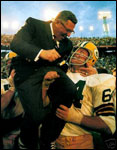
Everlong
- SquaredCircle Commisioner
- Living Legend













- Topic Author
- Posts: 10545
- Topics: 2439
- Age: 37
- Joined: Tue Oct 8, 2013
- Location: Brew City, USA
- Reputation: 3827
Re: Quentin Tarantino's next movie, The Hateful Eight, to be released next fall
Don't bother, Django was underwhelming.
I find Tarantino very hit or miss. I'm always interested when he brings out a film, because some of them are very good. But a lot of others get credit for being good even when they're really not.
I'll probably see this to find out which category it falls into. And if Tim Roth winds up being in it, my enthusiasm for it will increase dramatically.
I find Tarantino very hit or miss. I'm always interested when he brings out a film, because some of them are very good. But a lot of others get credit for being good even when they're really not.
I'll probably see this to find out which category it falls into. And if Tim Roth winds up being in it, my enthusiasm for it will increase dramatically.

- 0
-

Hanley!
- World Champion













- Posts: 5605
- Topics: 165
- Age: 38
- Joined: Tue Oct 8, 2013
- Location: Dublin, Ireland
- Reputation: 3988
Re: Quentin Tarantino's next movie, The Hateful Eight, to be released next fall
Man, he is going to have a tough time topping Django but I think Tarantino can pull it off. I was hoping that Kill Bill 3 was going to be his next film but I'm eager to see what he puts out after the best movie in his career (IMO).
Either way, can't wait.
Either way, can't wait.
- 0

-
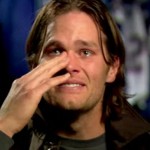
DanielsonTHAGOAT
- Next Big Thing













- Posts: 1287
- Topics: 155
- Joined: Tue Oct 8, 2013
- Reputation: 325
Re: Quentin Tarantino's next movie, The Hateful Eight, to be released next fall
I really enjoyed Django. I am generally a fan of Tarantino so I am looking forward to this.
- 0
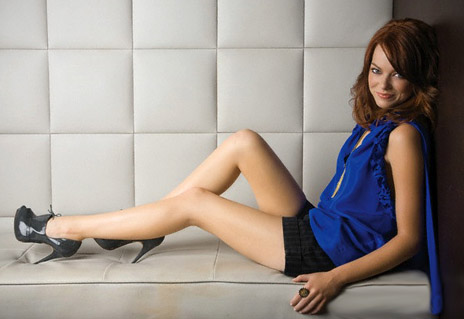
-
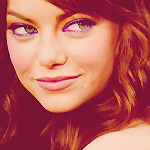
Viazon
- Main Eventer













- Posts: 3504
- Topics: 244
- Age: 39
- Joined: Thu Oct 10, 2013
- Location: Bedford, England
- Reputation: 980
Re: Quentin Tarantino's next movie, The Hateful Eight, to be released next fall
Better yet, it's going to be shot in orgasmic 70mm! 

- 0
Re: Quentin Tarantino's next movie, The Hateful Eight, to be released next fall
DanielsonTHAGOAT wrote:Man, he is going to have a tough time topping Django but I think Tarantino can pull it off. I was hoping that Kill Bill 3 was going to be his next film but I'm eager to see what he puts out after the best movie in his career (IMO).
Either way, can't wait.
Still don't really understand why people want to see a third Kill Bill film. The first was mediocre and the second was terrible. I can only imagine what the third would look like.

They're among his worst films in my mind, there's no reason for him to go back to that well.
- 0
-

Hanley!
- World Champion













- Posts: 5605
- Topics: 165
- Age: 38
- Joined: Tue Oct 8, 2013
- Location: Dublin, Ireland
- Reputation: 3988
Re: Quentin Tarantino's next movie, The Hateful Eight, to be released next fall
Hanley! wrote:DanielsonTHAGOAT wrote:Man, he is going to have a tough time topping Django but I think Tarantino can pull it off. I was hoping that Kill Bill 3 was going to be his next film but I'm eager to see what he puts out after the best movie in his career (IMO).
Either way, can't wait.
Still don't really understand why people want to see a third Kill Bill film. The first was mediocre and the second was terrible. I can only imagine what the third would look like.
They're among his worst films in my mind, there's no reason for him to go back to that well.
Kill Bill 1 and 2 are easily my most hated films. There is absolutely, categorically no need for Kill Bill 3.
I'll probably end up seeing this film eventually but I can't actually think of a Tarantino film I've enjoyed. I haven't seen Django though, which has received massive hype.
- 0
-

PorkChop
- Creative Team
- World Champion













- Posts: 7104
- Topics: 1430
- Joined: Tue Oct 8, 2013
- Reputation: 2126
Re: Quentin Tarantino's next movie, The Hateful Eight, to be released next fall
I thought Kill Bill 1 was OK. However, Kill Bill 2 was a bore.
- 0

-

Viazon
- Main Eventer













- Posts: 3504
- Topics: 244
- Age: 39
- Joined: Thu Oct 10, 2013
- Location: Bedford, England
- Reputation: 980
Re: Quentin Tarantino's next movie, The Hateful Eight, to be released next fall
Haven't had a chance to see Django but I thought it looked very interesting.
I didn't care for Kill Bill, I don't think it was a very good movie but it put on a lot more style and art than a compelling story to me, and I think the uniqueness of its style is what made people really drawn to it.
My friend loved pulp fiction, it changed his life, and his job is now part of cinema. I haven't watched the whole movie through one go, but I didn't think it was that special from what I have seen.
I personally really enjoyed Reservoir Dogs. Something about that movie gets me into it, and I think its all the bouncing back and forth in time. Just seeing pieces come together like that is cool, and not in like a mystery way where they blow their load at the end in a perspective that's hard to see coming. This movie was a bunch of stories that came together and you could just tell it was going to blow the fuck up haha.
Don't know anything about this still. I am not sure if I will see it.
I didn't care for Kill Bill, I don't think it was a very good movie but it put on a lot more style and art than a compelling story to me, and I think the uniqueness of its style is what made people really drawn to it.
My friend loved pulp fiction, it changed his life, and his job is now part of cinema. I haven't watched the whole movie through one go, but I didn't think it was that special from what I have seen.
I personally really enjoyed Reservoir Dogs. Something about that movie gets me into it, and I think its all the bouncing back and forth in time. Just seeing pieces come together like that is cool, and not in like a mystery way where they blow their load at the end in a perspective that's hard to see coming. This movie was a bunch of stories that came together and you could just tell it was going to blow the fuck up haha.
Don't know anything about this still. I am not sure if I will see it.
- 0

-

Kein
- Intercontinental Champ












- Posts: 915
- Topics: 15
- Joined: Thu Dec 12, 2013
- Location: Seattle, WA
- Reputation: 280
Re: Quentin Tarantino's next movie, The Hateful Eight, to be released next fall
Apparently Tarantino will always distribute a few actual 70mm film negatives of this work once it is completed. There's only a small handful of cinemas left in the world that still have 70mm projections, but if anybody here has the opportunity to see it that way, I'd say go for it. It'd vastly outweigh your (now conventional) 2K/4K digital projection or even a traditional 35mm projection which are also becoming increasingly rare.
I am not the biggest Tarantino fan, but I love his ardent passion for film. He, alongside a few other filmmakers (including Nolan), have agreed to purchase large quantities of Kodak film stock so the company can continue to remain economically viable. Got to admire that.
I am not the biggest Tarantino fan, but I love his ardent passion for film. He, alongside a few other filmmakers (including Nolan), have agreed to purchase large quantities of Kodak film stock so the company can continue to remain economically viable. Got to admire that.
- 0
Re: Quentin Tarantino's next movie, The Hateful Eight, to be released next fall
@NoDQ could you give a quick overview of what the difference is between 70mm and standard and what makes it so great? I honestly know nothing about it.
- 0


YOU HEARD IT FROM TAJ FIRST FOLKS
-

Everlong
- SquaredCircle Commisioner
- Living Legend













- Topic Author
- Posts: 10545
- Topics: 2439
- Age: 37
- Joined: Tue Oct 8, 2013
- Location: Brew City, USA
- Reputation: 3827
Re: Quentin Tarantino's next movie, The Hateful Eight, to be released next fall
Everlong wrote:@NoDQ could you give a quick overview of what the difference is between 70mm and standard and what makes it so great? I honestly know nothing about it.
Sorry, I should have been more specific.
Basically, 70mm is the highest resolution film-gauge on the market. It vastly outweighs the standard (i.e., 35mm film) and also anything that is produced by digital equipment (i.e., a majority of films made today). Basically, it is the most vivid, clear, and absolutely gorgeous presentation of film out there.
Just look at the size differences between 35mm film and 70mm film. The larger the film strip, the more detail the camera can capture. Resolution is off-the-walls in terms of clarity, and everything feels and looks so much more epic and vast.
Some of The Dark Knight was actually shot in the 70mm IMAX format, and here is a cool picture that illustrates the difference in terms of the sheer disparity between both formats:


While both film frames here capture the exact same image, the 70mm is higher in resolution, detail, and scope. This is obviously because it's larger (and of higher general celleuoid quality) than 35mm, and, as previously mentioned, has the capability to record more detail without losing resolution or becoming victim to compression. In saying that, IMAX 70mm is a bit different to widescreen 70mm, but the point still stands.
70mm films are extremely rare. In fact, there has only been around 20-40 films in the history of motion pictures that have gone down this route. Some of the most notable examples are 2001: A Space Odyssey, The Master, It's a Mad, Mad, Mad, Mad World, Lawrence of Arabia, West Side Story, Patton, Hamlet (1996), etc.
The reason why they are so rare is because it is incredibly expensive. Purchasing 70mm film is a very costly and complicated process, and hiring professional film equipment that have the technical capacities to shoot with 70mm is something studios and financiers have no interest in pursuing, and you can probably see why, especially in an era of compressed digital projection.
Also, in a day and age where film is dying (both as a negative format and as distributional source) and the subsequent rise of digital, 70mm is unbelievably rare. Paul Thomas Anderson's The Master, which was released a few years back, was the first film to be shot on 70mm since Hamlet (1996), twelve years earlier. There were about 5000-10000 films made between those years that were shot on traditional 35mm or digital. That just goes to show.
Of course, to get the most out of a 70mm film, you need to watch it via. 70mm projection (i.e., a movie projector that is capable of projecting 70mm film as opposed to traditional 35mm). This is even rarer. I mean, totally rare. Australia, for example, only has one cinema left in the country that can do this. Then again, even seeing a 70mm film printed on a 35mm strip is still an amazing experience, even if much (about 50%) of its resolution is lost. Same if you see a 70mm film via. digital projection (whether it be 2 or 4K) or even at home on Blu-ray. It's far from the best, but either way, it rocks.
TLDR - To see Tarantino actually lobby to get The Hateful Eight shot in 70mm is remarkable. Price perhaps isn't that much of an issue heresince it is a large-scale project that has a lot of money, but it is the ultimate cinematic experience. Even today, the most advanced, expensive and top-of-the-line digital cameras don't even have HALF the resolution that 70mm does.
Look at something like The Hobbit. That was shot on high resolution digital (and the most recent at an ambitious 48fps), and it's an absolutely beautiful film, for sure, but put that next to The Master and eventually The Hateful Eight or any other 70mm film, and in pure technical terms, it is considerably inferior.
Of course, this is just about presentation.
 What matters is if it is a good film or not, regardless of format, but a majority's of today's works are being shot digitally. 35mm, the negative format that used to be employed for just about every professional film ever made before 2004-2005, is slowly (and sadly) dying, despite the outreach from filmmakers like Tarantino or Nolan or Spielberg. To see Tarantino lobby for an ever rarer format, though, and actually get away with it is simply awesome.
What matters is if it is a good film or not, regardless of format, but a majority's of today's works are being shot digitally. 35mm, the negative format that used to be employed for just about every professional film ever made before 2004-2005, is slowly (and sadly) dying, despite the outreach from filmmakers like Tarantino or Nolan or Spielberg. To see Tarantino lobby for an ever rarer format, though, and actually get away with it is simply awesome. Then again, none of us here will probably have the opportunity to see an actual 70mm print of The Hateful Eight. If you end up seeing it at the cinemas, it'll most likely be via. digital projection (hopefully 4K rather than 2K, which spawns better resolution, if you're lucky). A lot of its clarity and scope will be lost since it is utterly compressed, overall, but it will still be a very cinematic and epic experience.
Sorry for the long post. I'm geeking out a bit.

Here is another cool illustration:
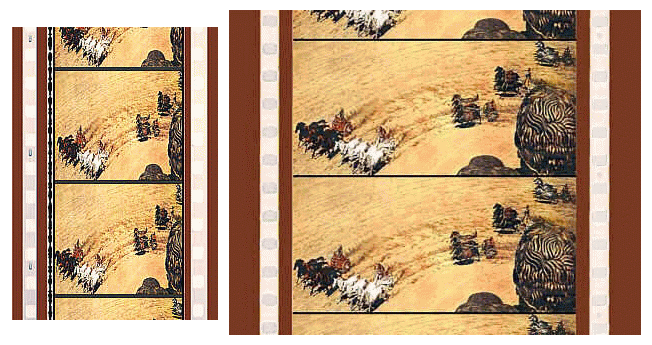
On the left is traditional 35mm. On the right in 70mm. Just look at how much more range and depth you're getting when shooting with 70mm. And then imagine seeing that in cinemas, on a large screen with surround sound. You're capturing so much more 'action' and everything does not feel as... condensed. Tarantino will definitely utilise the advantages of 70mm when shooting - expect a lot of long, wide shots. Man, I can't wait. Also, I hope my post hasn't gave the implication that 35mm is some type of inferior format. I love that, too - in fact, 35mm still has higher resolution than most digital cameras today. Only the most recent 4K technology in digital can perhaps match the overall quality of 35mm. So yeah, no disrespect to 35mm. Perhaps most of everybody's favourite films here (including mine) were shot on that format.
- 24
Re: Quentin Tarantino's next movie, The Hateful Eight, to be released next fall
^That was an awesome post man, thanks for the explanation. So I guess another question I have: you said it's extremely costly. For these movies that are going to be huge blockbusters, though, would it not be worthwhile for them to spend a bit more to get the highest quality film possible? Or do they just not do it at this point because so few theaters actually have the capability to project in 70mm?
- 0


YOU HEARD IT FROM TAJ FIRST FOLKS
-

Everlong
- SquaredCircle Commisioner
- Living Legend













- Topic Author
- Posts: 10545
- Topics: 2439
- Age: 37
- Joined: Tue Oct 8, 2013
- Location: Brew City, USA
- Reputation: 3827
Re: Quentin Tarantino's next movie, The Hateful Eight, to be released next fall
Everlong wrote:^That was an awesome post man, thanks for the explanation. So I guess another question I have: you said it's extremely costly. For these movies that are going to be huge blockbusters, though, would it not be worthwhile for them to spend a bit more to get the highest quality film possible? Or do they just not do it at this point because so few theaters actually have the capability to project in 70mm?
Thanks! :)
In regards to your question, it comes down to a numerous range of factors. Firstly, and as you raised, very few theatres now can project 70mm. In fact, 70mm projection has always been rare. They're awfully expensive for cinemas to purchase, and very intricate to operate (one has to a talented projectionist in that regard). Most theatres today digitally project (predominately in 2K and some high-end ones in 4K). From a business standpoint, why bother creating a film with a negative format where most cinemas won't even see a quarter of its unabridged resolution? The digital equivalence of 70mm is something over 9 or possibly 10K. The final result, on a digital projector, would be an extremely compressed and diluted picture, and one could barely tell, from the naked eye, that it was originally a 70mm print. Even if you project a 70mm film onto a 35mm gauge, you're losing about half of its resolution, and again, getting a fairly condensed picture. It's still awesome, don't get me wrong, but from a standpoint of a 'businessmen', it's wasteful.
Also, shooting with film, specifically 70mm, is a much more arduous, demanding, and time-consuming than electing to go with digital. 70mm cameras are huge and complex pieces of technology - just threading film through the device takes long enough. More, finding applicable lenses and even the right 70mm film stock can be challenging. You also need to really work around 70mm to fully utilise it - large set pieces, open spaces, adequate lighting, etc. The producers and financiers behind these large-scale blockbuster projects are all about efficiency and getting a movie done as quickly and as stress-free as possible, in my personal opinion. Shooting with 70mm is basically prolonging the wait, and quite considerably too. With digital, you have the opportunity to immediately view what you've shot. They are so many other advantages, too. With film, it's a much longer and tedious process. You have to get it developed and then you have to put it through your now (customary) digital intermediate process. Films are all edited digitally nowadays, as you probably know, so as soon as a 16, 35 or 70mm film goes through that 'digital process', a lot of its filmic authenticity is lost.
70mm has always been rare, even before digital. It was always hard to come across any theatre that featured 70mm projection, and that's why only a very, very small handful of films in the medium's history have been shot with 70mm. Why bother filming in a negative format where only a very small minority will actually see it in its truest form? Many people have probably seen 2001: A Space Odyssey, but only a few have seen an actual 70mm print of that film. So yeah, it's not economically viable. Plus, if one makes a 70mm film, there are hardly no cinemas out there that are willing to purchase such film prints, so it might end up being a completely digital distribution process, anyway. It's the same with films that are still being shot on 35mm - not a whole lot of cinemas still project 35mm, so when it comes to releasing a new film, only a few actual film reels are being printed. They are not in high demand anymore.
I would love to see more blockbusters shoot in 70mm, myself, but the studio system is all about making movies and making them quickly. This is why even traditional 35mm, the number one negative format for all films for over 100 years, is currently on the decline - digital is quicker, lighter, more accessible, more compatible, and more 'user-friendly'. And it does look good, too. The Avengers, Guardians of the Galaxy, and Dawn of the Planet of the Apes are all recent 2014 examples of films being shot on digital.
Just look at the size of these 70mm cameras:

And then you need room and accessibility for dolly tracks and cranes...
And the size of the projectors:

Even though very few people will be able to actually see a 70mm print of Tarantino's film, it's still worth it. Yeah, watching it in the cinemas via. digital projection will only give you a quarter or half of its full resolution, but it will still be awesome. It will feel bigger and more epic, with more detail and scope than most other films released today.
Whether it'll be a good movie still remains unknown, though.

Again, sorry for the long reply. I don't expect anyone to read all of that.
- 10
Re: Quentin Tarantino's next movie, The Hateful Eight, to be released next fall
Fascinating stuff, thanks for the posts dude. 

- 0


YOU HEARD IT FROM TAJ FIRST FOLKS
-

Everlong
- SquaredCircle Commisioner
- Living Legend













- Topic Author
- Posts: 10545
- Topics: 2439
- Age: 37
- Joined: Tue Oct 8, 2013
- Location: Brew City, USA
- Reputation: 3827
|
15 posts
• Page 1 of 1
|
15 posts
• Page 1 of 1
Who is Online Now?
Users browsing this forum: No registered users and 6 guests








